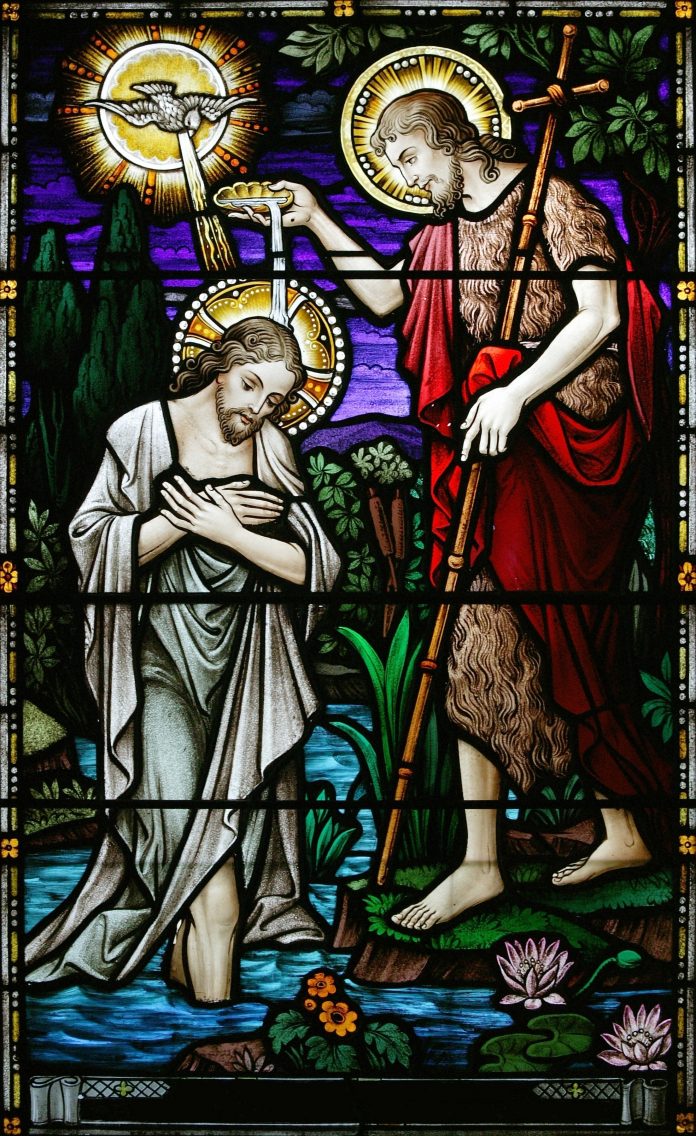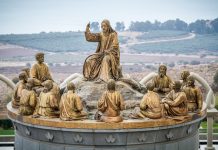
by Alice Pfeifer, CSA
This Complete-A-Project Bible Search activity is for teacher and students (grades 4-6) working together. Use the Bible to answer the questions on the activity sheet [CLICK HERE]. This Bible Search is based on Mark 2:1-12.
Background
* According to Mark’s Gospel, Jesus makes his home in Capernaum during his public life. It is quite likely that he stays at Peter’s house. It probably has stone walls and a flat roof made of dried mud and thatch that is held in place by wooden crossbeams. Therefore, making a hole in the roof and later mending it is relatively easy. The top of the house can be reached by an outdoor stairway.
* Some scholars speculate that the four men helping their friend might be Peter, Andrew, James, and John, the same four men prominent in the previous chapter of Mark.
* The Gospel clearly states in v. 5 that Jesus is moved to action by the men’s faith. This theme is repeated throughout Mark’s Gospel: Great things happen for those who approach Jesus in faith.
* Jesus does not begin by healing the man but by forgiving his sins. This does not mean that Jesus thinks sickness is a punishment for sin, for elsewhere in the Gospels he corrects this common but mistaken notion. (See Luke 13:1-5 and John 9:2-3.)
* The scribes who question Jesus’ power to forgive sins are specially trained in interpreting the Law of Moses. Because Jesus has no special training, they think he must be wrong whenever his teachings clash with theirs.
* To blaspheme is to show serious disrespect for God. The scribes think Jesus is blaspheming because he, a mere man to their way of thinking, is taking on himself a power only God has. Jesus therefore cures the ailing man to demonstrate the divine source of his power. It is noteworthy that v. 12 says all are astounded by the miracle, for this shows that the scribes are reconsidering their doubts about Jesus.
* Two names or titles that may seem strange to modern ears appear in this Gospel story. The first is “Child.” When Jesus addresses the paralytic as “Child,” he is expressing his affection for the man. The second title we might find strange is one Jesus uses for himself: “Son of Man.” Why does he not say “Son of God” if he is trying to prove he is divine? For first-century Jews, the expression “Son of Man” brings to mind a biblical prophecy about “One like a son of man coming, on the clouds of heaven” (Daniel 7:13). By calling himself “Son of Man,” Jesus is saying that he is the Messiah sent by God. Although the Jews expect the Messiah to be human, believers in Jesus eventually understand that he is not only sent from heaven by God, he is God.
Answers: 1. Capernaum 2. four 3. as a paralytic 4. faith 5. Child 6. your sins are forgiven
7. scribes 8. blaspheming 9. the Son of Man 10. all those present
Guide and activity sheet by Alice Pfeifer, CSA. Art by Ansgar Holmberg, CSJ.
MATERIALS
* Copies of the activity sheet [CLICK HERE], one copy for each student
* Bibles (The Search is based on the New American Bible.)
* Pencils or pens
PROCEDURE
1. Have a student read aloud the opening to the story about the Queen of Hearts election at Holy Trinity School. Then ask students these questions: Which two characters in this story are popular among their peers? How does the unnamed boy put his popularity to bad use? How does Savannah put her popularity to good use?
2. Point out that every person has unique gifts to be used for the good of others. Use the example of a person who is smart in school; that person can help other students and younger siblings with their homework. Ask students what their gifts are that they can use to help others.
3. Tell students that today’s Gospel is about four men who have two important gifts to put at the service of a friend who is paralyzed: (a) bodies strong and healthy enough to carry their friend on a mat and (b) faith in Jesus’ power to cure their friend. Then read the Gospel while students follow along in their Bibles, or have students take turns reading it.
4. Have students close their Bibles and work individually or in pairs to answer the ten questions on the activity sheet. Then read the correct answers and let students see how many they got right.
5. Read Background (or summarize it in your own words).
6. Have a student read the closing to the story about the school election. Point out that while most of us cannot directly heal those who cannot walk, the way Jesus did in the Gospel, all of us can help the least of our brothers and sisters to “walk tall”—by treating them with the same kindness and consideration that Jesus would show them.
Copyright 2012, Bayard, Inc. All rights reserved. This article is protected by United States copyright and other intellectual property laws and may not be reproduced, rewritten, distributed, redisseminated, transmitted, displayed, published or broadcast, directly or indirectly, in any medium without the prior written permission of Bayard, Inc.
This article was written by the Catechist Staff and appeared in Catechist magazine, January 2012.
Image Credit: Shutter Stock 6709591




